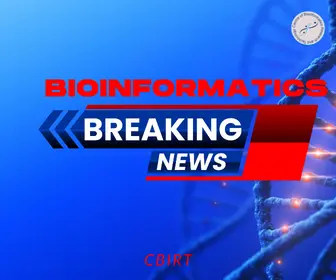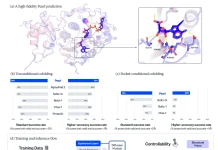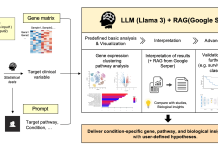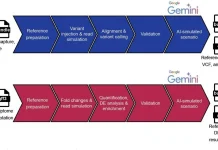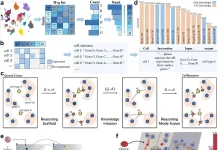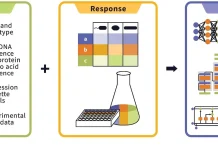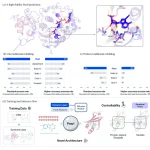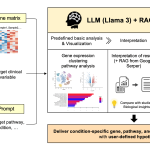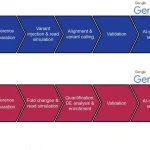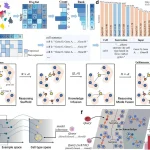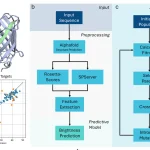In a groundbreaking collaboration, researchers from the Arc Institute, Stanford University, and NVIDIA have unveiled Evo 2, a cutting-edge AI model designed to understand and manipulate the genetic code across all domains of life. This model represents a significant leap forward in genomic research. Built on the NVIDIA DGX Cloud, Evo 2 is now the largest publicly available foundation model for biomolecular sciences, accessible to researchers worldwide via the NVIDIA BioNeMo platform.
What Makes Evo 2 Unique?
Evo 2 is not just another AI model. It’s the latest cutting-edge tool designed to analyze the biological intricacies of life. Evo 2’s model nucleotides contain 9.3 trillion bases, allowing it to scale up the analysis of DNA, RNA, and protein makeup to astounding levels. Evo 2 stands apart from all its predecessors as it can generalize across prokaryotic, eukaryotic, and archaea genomes, enabling scientists to study genes, mutations, and biological systems simultaneously.
Some key highlights of Evo 2 include:
- A massive 1-million-token context window, allowing it to analyze long genomic sequences with high precision.
- Predicting gene mutations and their effects, including the impact of previously unknown BRCA1 gene mutations related to breast cancer.
- Generating realistic biological sequences, helping researchers design new proteins, biofuels, and even synthetic genomes.
Applications Across Biomolecular Sciences
The capabilities of Evo 2 extend across multiple scientific disciplines, making it a powerful tool for genetic research, biotechnology, and healthcare. Here’s how Evo 2 is revolutionizing key fields:
Healthcare and Disease Research
When it comes to predicting the impact genetic mutations have, Evo 2 proves to be incredibly accurate, especially on disease-bearing genes like BRCA1. This model was able to accurately identify the functional consequences of mutations with a stunning 90% accuracy. These results can help accurately diagnose cancer and aid custom treatment therapies.
Apart from cancer research, Evo 2 can assist in the evolving world of precision medicine by predicting interactions between biological systems and new molecules for drug discovery.
Agriculture Biotechnology
As food security becomes a more pressing issue, Evo 2 provides an innovative solution to develop genetically robust crops. Analyzing plant genomes enables the model to isolate genetic markers associated with improved drought tolerance, pest resistance, and nutrient density, which can foster sustainable agriculture.
Eco-friendly and Industrial Uses
Evo 2 is capable of producing and predicting functions of proteins, which is beneficial to bioengineering by aiding in the design of biofuels, biodegradable plastics, and even microorganisms that can degrade pollutants. By employing AI to create biologically novel solutions, scientists can solve some of the most important environmental issues the world faces today.
How Evo 2 Works: The Power of AI in Genomics
Modern Evolve 2 is built using StripedHyena 2, a novel AI that can handle massive amounts of genomic data as a unit. StripedHyena 2 processes longer genetic sequences better than the traditional Transformer-based models. Therefore, it accomplishes undertakings much faster and more efficiently.
What initially translates as a productive training session, Evo 2 spent 2,000 NVIDIA H100 GPU on cloud DGX, thus achieving biological AI status. Genomic sequences can be processed without the need for specialized tuning; as a result, Evo 2 becomes highly versatile across a broad range of fields.
Open Science: Making Evo 2 Accessible to Researchers
A significant milestone for Evo 2 is its fully open-source nature. Unlike many high-performance AI models that remain proprietary, Evo 2 is freely available for researchers to explore, modify, and enhance. The OpenGenome2 dataset, which was used to train Evo 2, is also publicly accessible, ensuring transparency and reproducibility in scientific research.
Conclusion
Evo 2 represents a new era of AI-driven biology, where machine learning and genomics merge to unlock the secrets of life. The ability to model and generate biological sequences at scale will lead to breakthroughs in medicine, agriculture, and bioengineering.
With Evo 2 AI models continuing to improve, researchers are hopeful of combining epigenomic and transcriptomic datasets to deliver better virtual biological models. In the future, it might be possible to create synthetic organisms, improve gene therapies, or even create biological systems for tailor-made medicine.
“Deploying a model like Evo 2 is like sending a powerful new telescope out to the farthest reaches of the universe,” said Dave Burke, Arc’s chief technology officer. “We know there’s immense opportunity for exploration, but we don’t yet know what we’re going to discover.”
Article Source: Reference Paper | Reference Article 1 | Reference Article 2 | The codes supporting the findings of the study are available on GitHub.
Disclaimer:
The research discussed in this article was conducted and published by the authors of the referenced paper. CBIRT has no involvement in the research itself. This article is intended solely to raise awareness about recent developments and does not claim authorship or endorsement of the research.
Follow Us!
Learn More:
Anchal is a consulting scientific writing intern at CBIRT with a passion for bioinformatics and its miracles. She is pursuing an MTech in Bioinformatics from Delhi Technological University, Delhi. Through engaging prose, she invites readers to explore the captivating world of bioinformatics, showcasing its groundbreaking contributions to understanding the mysteries of life. Besides science, she enjoys reading and painting.




